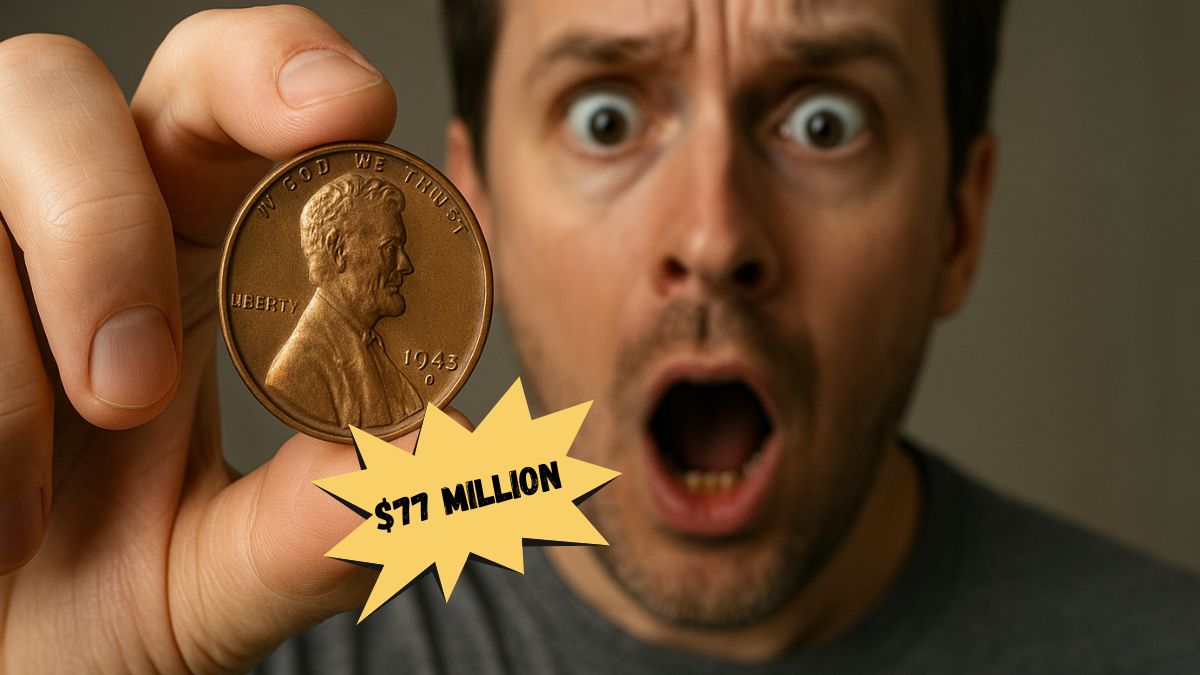The allure of discovering a rare coin worth millions in your pocket change is undeniably captivating.
Recently, headlines have circulated about a Lincoln Wheat Penny valued at $77 million, sparking excitement among collectors and enthusiasts alike.
But is there truth to this claim? Let’s delve into the world of rare pennies to separate fact from fiction.
Understanding the Lincoln Wheat Penny
The Lincoln Wheat Penny, minted from 1909 to 1958, features President Abraham Lincoln on the obverse and two wheat stalks on the reverse.
Designed by Victor David Brenner, this coin was the first U.S. currency to depict a historical figure, marking a significant shift in American coinage.
Key Features
- Obverse: Portrait of Abraham Lincoln
- Reverse: Two wheat stalks flanking the denomination
- Composition: Primarily 95% copper and 5% tin and zinc (with exceptions during wartime)
The Myth of the $77 Million Penny
Despite the buzz, there is no verified record of a Lincoln Wheat Penny selling for $77 million. The most valuable known penny is the 1943-D Bronze Lincoln Cent, which fetched $1.7 million at auction.
This coin’s value stems from its rarity; during World War II, pennies were supposed to be made from steel to conserve copper, but a few bronze planchets were mistakenly used.
Notable Rare Lincoln Wheat Pennies
While the $77 million penny remains a myth, several Lincoln Wheat Pennies have garnered significant attention and value due to their rarity and historical significance.
High-Value Lincoln Wheat Pennies
| Year | Mint Mark | Variety/Error | Estimated Value |
|---|---|---|---|
| 1909 | S | VDB (initials on reverse) | Up to $168,000 |
| 1914 | D | Low mintage | Up to $158,625 |
| 1922 | D | No D (mint mark error) | Up to $92,000 |
| 1943 | D | Bronze planchet error | Up to $1.7 million |
| 1955 | — | Doubled die obverse | Up to $114,000 |
Factors That Increase a Penny’s Value
Several elements can elevate the worth of a Lincoln Wheat Penny:
- Rarity: Limited mintage or errors increase desirability.
- Condition: Coins in mint or uncirculated condition fetch higher prices.
- Historical Significance: Coins from notable years or events are more valuable.
- Mint Mark: Certain mint locations produced fewer coins, making them rarer.
How to Identify a Valuable Lincoln Wheat Penny
To determine if you possess a rare penny:
- Check the Date and Mint Mark: Look for key years like 1909-S, 1914-D, or 1943-D.
- Inspect for Errors: Doubling of letters or numbers, missing mint marks, or unusual compositions.
- Assess the Condition: Coins with minimal wear are more valuable.
- Seek Professional Appraisal: Experts can provide accurate valuations.
While the tale of a $77 million Lincoln Wheat Penny is more myth than reality, the world of coin collecting is filled with genuine treasures waiting to be discovered.
By understanding the key features and history of these coins, you might just find a valuable piece of American history in your own pocket.
FAQs
What makes the 1943-D Bronze Lincoln Cent so valuable?
In 1943, the U.S. Mint switched to steel pennies to conserve copper for the war effort. However, a few bronze planchets were mistakenly used, resulting in extremely rare coins. The 1943-D Bronze Lincoln Cent is one of these rare errors, making it highly sought after by collectors.
How can I tell if my 1955 penny is the doubled die variety?
The 1955 doubled die penny exhibits noticeable doubling in the date and lettering on the obverse. If these features appear blurred or doubled, you might have this rare variety. It’s advisable to have the coin authenticated by a professional.
Are all 1909-S VDB pennies valuable?
Yes, the 1909-S VDB penny is valuable due to its low mintage of 484,000 and the controversy surrounding the prominent display of the designer’s initials, which led to its early withdrawal from circulation.

